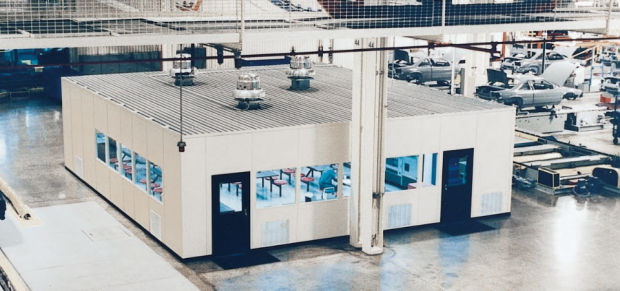Labor expenses play a significant role in the financial preparation of construction work. Thus, cost reductions can be achieved through the utilization of modular construction. Explore how modular construction reduces the work required to complete building projects.

(Photo : PortaFab/PortaFab )
1. Minimal Clean Up
The elimination of debris, scrap, and dust generated during the cutting and fabrication of each component is a feature of modular building systems. Off-site construction, integration, and installation of the components eliminate the use of drywall, paint, insulation, and sawdust. Additional components are optional if one suffers a miscut or inaccurately measures an item. Most of the time, modular systems are shipped in a single shipment containing all the components. Therefore, they can be carried to the installation location in a short amount of time. Typically, the cleanup consists solely of the disposal of the materials used for packing.
2. Coordination of Trades
A conventional construction project can be made easier to coordinate by using modular building systems, which facilitate the coordination of the workers involved. Coordinating carpenters, drywallers, painters, and other tradesmen are virtually eliminated due to the in-house production of every building component, not just architects and specifiers.
3. Offers An Expedited Project Timeline
Unlike conventional building projects, which can take anywhere from six to twelve months to complete, modular construction projects typically only take between eight and twenty weeks, which results in a time savings of 30 to 50%. Moreover, the accelerated schedule associated with modular construction arises from concurrently executing tasks within a factory setting and on-site. As a result, modular structures can be occupied and finished in a shorter period than conventional structures, which require several months to reach completion.
Also Read: 8 Futuristic Construction Technology: From Self-Healing Concrete to 5D Building Information Modeling
4. Reusable Materials
In numerous projects, construction companies have returned to a customer's facility and expanded an existing modular office when they outgrew it. In such cases, there is no need to purchase an entirely new structure if modifications need to be made to one of our buildings. On the other hand, businesses experiencing a significant expansion and having ever-changing space requirements over an extended period can benefit tremendously from modular offices' flexibility. Additionally, mezzanine systems are similarly extensible since they can be expanded using an addition to the structure or disassembled and reassembled in a different location.
5. Structure Durability
Prefabricated structures must be transported from the manufacturing plant to the construction site before installation. Thus, the structure will be transported, occasionally across the United States, after being wrapped to protect it from debris and loaded onto the bed of a flatbed vehicle. This trip will usually be a challenging ride with excellent road conditions. By designing the buildings to endure the rigors of shipping, companies can guarantee that they will arrive at the construction site in the best possible condition.
Furthermore, the construction industry supports the durability of modular structures for numerous factors. Nevertheless, for modular structures to keep their structural integrity both during and after transportation, they need to be constructed in a way that makes them naturally stronger.
Related Article: Elevating Home Design: The Soaring Appeal and Perks of Building Modular Construction







